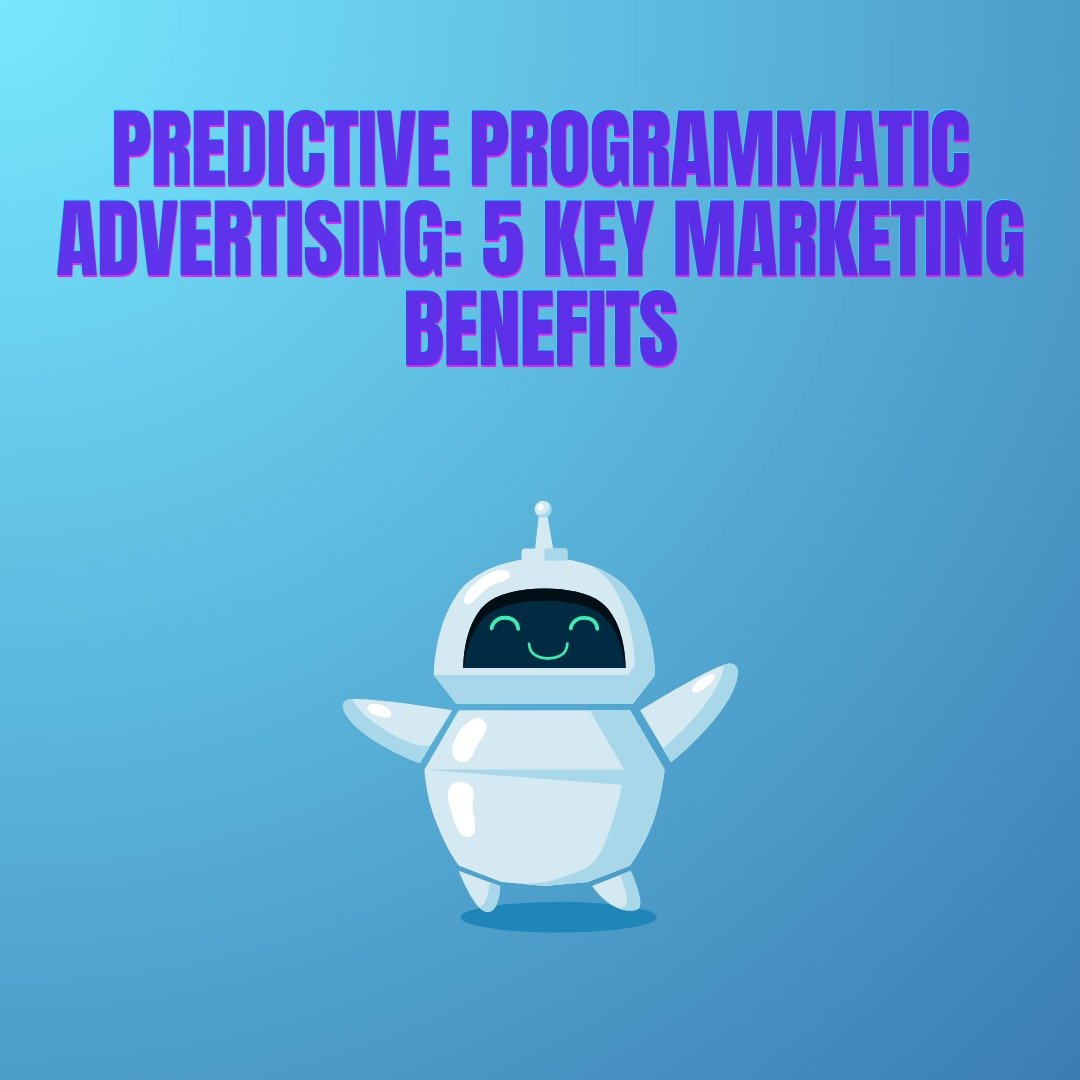Programmatic advertising has completely transformed how brands connect with their audiences in today’s digital-first world. Gone are the days when marketers had to manually bid on ad placements or rely on guesswork to target the right people. With the rise of predictive programmatic advertising, businesses can now harness the power of artificial intelligence (AI), machine learning, and big data to deliver smarter, faster, and more profitable ad campaigns.
Predictive programmatic advertising uses advanced algorithms to analyze massive datasets and forecast user behavior. This means brands can automatically serve the right ad to the right person at the right time, maximizing engagement and return on investment (ROI). In an era where every click and impression counts, this technology is not just an advantage; it is a necessity.
Below are the five proven benefits that make predictive programmatic advertising a game-changer for marketers in 2025 and beyond
1, Smarter Targeting Through Predictive Insights
Traditional ad targeting often relies on demographics, interests, or behavioral segments that may be outdated or incomplete. Predictive programmatic advertising takes this to a whole new level by using real-time data and predictive modeling to anticipate user intent.
AI-driven algorithms process signals like browsing history, purchase behavior, device usage, and even location to predict which users are most likely to convert. This allows brands to optimize their ad spend by focusing only on high-potential audiences.
For instance, an e-commerce brand selling fitness gear can use predictive models to identify users who have recently shown interest in health apps, workout routines, or diet plans. By automatically targeting this audience, the brand improves its conversion rate while minimizing wasted impressions.
Key takeaway: Predictive targeting ensures precision, relevance, and higher ROI for every campaign.
2,Real-Time Optimization for Maximum Performance
One of the biggest advantages of predictive programmatic advertising is real-time optimization. Instead of waiting for post-campaign reports, the system continuously learns and adjusts ad placements based on live performance data.
If a particular creative or channel underperforms, the algorithm automatically reallocates the budget toward better-performing ads or audiences. This intelligent automation allows marketers to make data-driven decisions instantly, leading to faster results and improved efficiency.
Moreover, predictive analytics can forecast when and where ads will perform best, ensuring that campaigns run during peak engagement periods. This level of adaptability makes every advertising dollar count.
Key takeaway: Real-time learning enables campaigns to constantly evolve and improve for stronger results.
3,Enhanced Personalization and User Experience
Today’s consumers expect ads that speak directly to their needs and preferences. Generic messaging no longer works. Predictive programmatic advertising allows brands to deliver personalized ad experiences at scale.
By analyzing customer data from various touchpoints, predictive systems can customize everything from ad copy and visuals to timing and placement. For example, a travel company can automatically promote beach destinations to users researching tropical vacations, while targeting others with mountain getaways based on past search history.
This personalized experience not only boosts engagement but also enhances brand perception. When audiences feel understood, they are more likely to trust the brand and take action.
Key takeaway: Predictive advertising empowers hyper-personalized experiences that increase engagement and loyalty.
4,Improved Budget Efficiency and ROI
Every marketer’s ultimate goal is to get the best results from every dollar spent. Predictive programmatic advertising ensures that your ad budget is used effectively by optimizing bidding, targeting, and timing.
Machine learning models analyze performance patterns and predict which ad placements will generate the highest returns. This predictive bidding minimizes waste and ensures that you are not overspending on low-performing audiences or channels.
Furthermore, predictive technology can identify opportunities for cross-channel optimization, ensuring your message reaches users at multiple touchpoints without duplication. The result is a seamless advertising journey that converts more effectively while reducing acquisition costs.
Key takeaway: Predictive models turn your ad budget into a precision investment that consistently delivers measurable ROI.
5,Future-Proof Campaigns with Data-Driven Decisions
As marketing evolves, so do user expectations and privacy regulations. Predictive programmatic advertising helps brands stay ahead by adapting to these changes through data-driven insights.
Instead of relying solely on third-party cookies or static data, predictive models use contextual and first-party data to make accurate predictions about audience behavior. This approach not only aligns with evolving privacy standards but also ensures that brands continue to deliver relevant ads even as tracking technologies shift.
Additionally, predictive analytics provides marketers with forward-looking insights that go beyond basic metrics. Brands can identify emerging trends, forecast customer lifetime value, and anticipate changes in market demand before competitors do.
Key takeaway: Predictive programmatic advertising ensures long-term sustainability through future-ready, privacy-compliant marketing strategies.
How Predictive Programmatic Advertising Is Changing the Game
The true value of predictive programmatic advertising lies in its ability to bridge creativity with automation. It eliminates the guesswork from digital marketing by allowing data and technology to guide decisions, freeing marketers to focus on strategy and storytelling.
From real-time optimization to predictive audience insights, this technology enables brands to move beyond reactive marketing toward proactive, intelligent growth. Marketers who adopt predictive models early gain a competitive advantage, as their campaigns become not only efficient but also insightful and adaptive.
Moreover, as AI continues to evolve, predictive systems will become even more sophisticated, capable of understanding emotions, visual context, and nuanced consumer signals. The result will be a more human-like approach to automated advertising, one that blends precision with empathy.
Final Thoughts
Predictive programmatic advertising represents the next evolution of digital marketing that prioritizes data, personalization, and automation. It empowers brands to predict customer needs before they arise and deliver impactful messages at scale.
By leveraging predictive insights, real-time optimization, and intelligent targeting, marketers can create campaigns that are not just effective but future-proof. In a competitive digital landscape, the difference between good and great campaigns will increasingly depend on how well brands utilize predictive technology.
For businesses aiming to work smarter, not harder, predictive programmatic advertising is the key to unlocking sustainable growth, stronger engagement, and maximum ROI.


